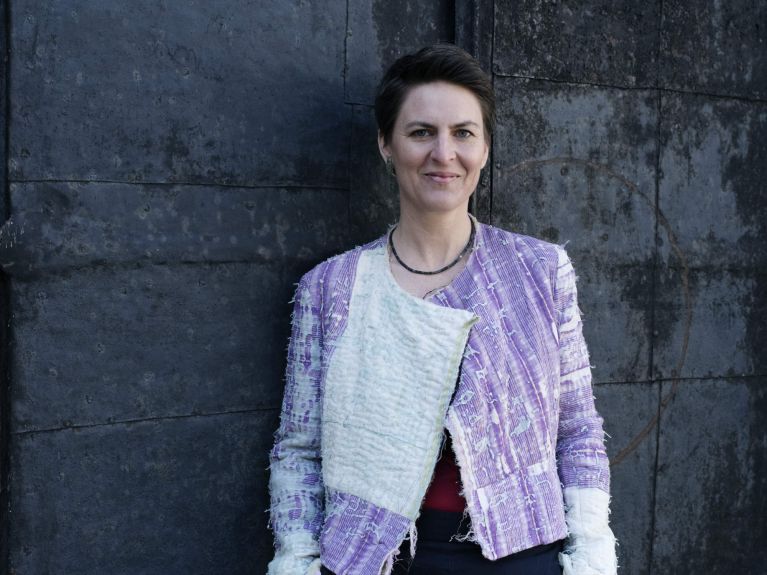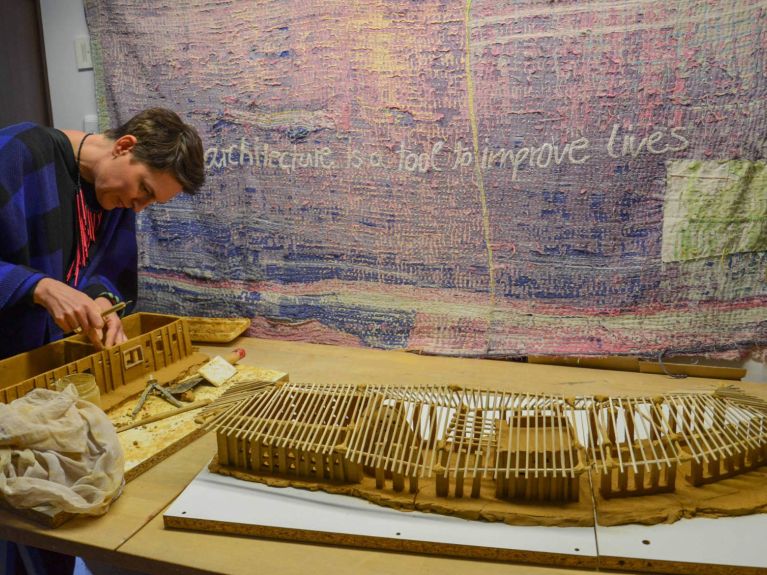“Earth is the winner”
Award-winning German architect Anna Heringer builds with natural materials all over the world. In her work she has one clear preference.

Anna Heringer is a German architect who designs buildings worldwide, above all with mud. She has also taught at prestigious universities and received numerous important awards for her work. From Laufen, the town where she was born on the border between Germany and Austria, she sends her ideas on building for tomorrow all over the world.
Ms Heringer, what does sustainable architecture mean to you?
It means really building in harmony with our environment. We have to use natural resources to achieve that – and for me earth is the winner here. It is available in large quantities all over the world, but we throw it away. Every excavation for a new building produces earth and clay that we could process in local workshops or factories. What is more, earth is easy to recycle. And we have known for centuries that earth has no detrimental effects on humans. It is an incredible building material in every respect.
If there were true-cost pricing for building materials, earth and mud would now be used much more today, because the costs of energy and disposal, for example, as well as CO2 emissions would also be included in the prices of building materials.
Is building with natural materials like mud and earth compatible with the high-tech and smart houses now being planned?
Yes, of course. Earth does not create energy, so solar technology, for example, can complement a house of that kind. Furthermore, although mud can be processed entirely by hand, it can also be used with modern technology. That is a matter of tools, not the material itself.

Your work has been honoured with many prizes and you have been awarded a UNESCO chair. But have you noticed a real rethink towards greater sustainability?
Things are definitely moving. When I was a student, building with mud was a pipe dream. Today I teach it at universities like Harvard and ETH Zürich. The subject of sustainable architecture is increasingly gaining ground. Although the old building methods are still there, more and more people are realising that we urgently need changes.
You have realised projects all over the world. What differences and similarities have you noticed?
Building is a basic human need; there’s no difference here between Germany and Bangladesh or Ghana. All children play at building. That’s why it’s so important that people participate. This sense of community is still more strongly present in the countries of the Global South, but it also exists in Germany. When we designed an earthen altar in Worms Cathedral, for example, many members of the congregation were involved. And they very much enjoyed this joint activity. Sustainable architecture is hindered by too many rules and standards – and by fear. We need more trust – for example, in building with earth and clay.
You would like to receive regular information about Germany? Subscribe here:

